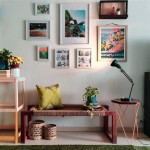Lab Room Decor: Enhancing Functionality and Aesthetics in Scientific Environments
Laboratory environments require a delicate balance between practicality and visual appeal. While the primary focus resides on research, experimentation, and data analysis, the physical space itself significantly impacts productivity, safety, and the overall well-being of researchers. Thoughtful lab room decor goes beyond simple aesthetics; it involves optimizing workflow, promoting a positive atmosphere, and ensuring adherence to stringent safety regulations. The consideration of design elements in laboratory spaces contributes to a more efficient and stimulating environment.
Traditional perceptions of laboratories often conjure images of sterile, utilitarian spaces devoid of personality. However, modern laboratory design recognizes the importance of creating a more human-centered environment. Incorporating thoughtful design elements can enhance the user experience, reducing stress, improving morale, and ultimately boosting the quality of research output. Furthermore, an aesthetically pleasing and well-organized lab can contribute to a more professional image, influencing collaboration opportunities and attracting funding. The following sections will delve into key aspects of lab room decor, offering practical guidelines for creating a functional and visually appealing scientific workspace.
Optimizing Space and Organization
Efficient use of space is paramount in a laboratory. Cluttered and disorganized environments can hinder workflow, increase the risk of accidents, and impede access to necessary equipment and materials. Therefore, careful planning and strategic organization are crucial components of effective lab room decor.
Modular workstations offer flexibility and adaptability. These systems allow for customization of workspaces to accommodate specific research needs and can be easily reconfigured as projects evolve. Mobile benches and carts provide additional flexibility, enabling researchers to move equipment and materials as needed, optimizing space utilization. Proper storage solutions are essential for maintaining a well-organized lab. This includes shelving units, cabinets, drawers, and specialized storage containers designed for chemicals, samples, and equipment. Labeling all storage containers clearly and consistently is crucial for efficient retrieval and hazard mitigation.
Color-coding systems can be implemented to further enhance organization. Assigning specific colors to different types of materials, equipment, or research areas can streamline workflows and reduce the likelihood of errors. For instance, different colored labels could be used to differentiate between chemicals with varying hazard levels, or colored tape could be used to demarcate specific zones within the lab.
Vertical space often goes underutilized in laboratories. Implementing wall-mounted shelving units and cabinets can significantly increase storage capacity without encroaching on valuable floor space. Pegboards can be used to organize tools and equipment, making them easily accessible and visually appealing. Careful consideration should be given to the placement of equipment and furniture to maximize natural light and minimize obstructions. The layout should promote a smooth flow of traffic, allowing researchers to move freely and safely within the lab.
Beyond physical organization, digital organization is equally important. Implementing a robust system for managing electronic data, research protocols, and experimental results is crucial for maintaining accuracy, reproducibility, and efficient data retrieval. This might involve using cloud-based storage solutions, electronic lab notebooks, and standardized naming conventions for files and folders.
Enhancing Aesthetics and Creating a Positive Atmosphere
While functionality is paramount, the aesthetic appeal of a laboratory should not be overlooked. Creating a visually stimulating and comfortable environment can positively impact researcher morale, productivity, and overall well-being. Incorporating elements of biophilic design, which aims to connect individuals with nature, can be particularly beneficial in laboratory settings.
Introducing indoor plants can significantly improve air quality, reduce stress levels, and enhance the visual appeal of the lab. Select plants that are low-maintenance and tolerant of indoor conditions. Consider incorporating green walls or vertical gardens to maximize the impact of greenery while minimizing space requirements. Natural light is highly desirable in laboratory environments. Maximize the use of natural light by keeping windows clean and unobstructed. If natural light is limited, use full-spectrum artificial lighting to simulate daylight and reduce eye strain. The color palette of the lab can significantly influence the overall atmosphere. Opt for calming and neutral colors, such as blues, greens, and grays, to create a relaxing and focused environment. Avoid overly bright or distracting colors, which can be overwhelming. Use accent colors sparingly to add visual interest and highlight specific areas.
Artwork and decorative elements can add personality to the lab and create a more welcoming atmosphere. Consider displaying artwork related to science, nature, or abstract concepts. Photographs of research subjects, scientific illustrations, or motivational quotes can also be used to personalize the space. Ensure that any artwork is appropriate for a professional environment and does not pose a safety hazard.
Noise control is an important consideration in laboratory design. Excessive noise can be disruptive and stressful, negatively impacting concentration and productivity. Implement sound-absorbing materials, such as acoustic panels, carpets, and curtains, to reduce noise levels. Designate quiet areas within the lab where researchers can focus without distractions. Temperature control is also crucial for comfort and productivity. Maintain a consistent and comfortable temperature throughout the lab. Provide individual climate control options, such as fans or space heaters, to accommodate individual preferences.
Ensuring adequate ventilation is vital for maintaining air quality and preventing the buildup of harmful fumes. Install and maintain a properly functioning ventilation system that effectively removes pollutants and provides fresh air. Regularly monitor air quality to ensure that it meets safety standards.
Prioritizing Safety and Ergonomics
Safety is the foremost consideration in any laboratory environment. Lab room decor should prioritize safety by minimizing hazards, promoting safe practices, and ensuring compliance with all relevant regulations. Ergonomics is also crucial for preventing injuries and promoting researcher well-being.
Clear and visible signage is essential for identifying hazards, providing instructions, and enforcing safety protocols. Use standardized warning signs to clearly indicate the presence of hazardous materials, equipment, or procedures. Post safety rules and emergency contact information in prominent locations. Ensure that all exits are clearly marked and easily accessible. Provide adequate fire extinguishers and other safety equipment in designated locations. Train all personnel on the proper use of this equipment.
Ergonomic design is crucial for preventing musculoskeletal disorders and promoting researcher comfort. Provide adjustable workstations, chairs, and equipment to accommodate individuals of different sizes and shapes. Ensure that work surfaces are at the correct height to prevent strain on the neck, shoulders, and back. Encourage researchers to take regular breaks to stretch and move around. Provide anti-fatigue mats in areas where researchers are required to stand for extended periods.
Proper waste disposal is essential for preventing contamination and protecting the environment. Provide clearly labeled containers for different types of waste, including hazardous waste, biohazardous waste, and recyclable materials. Train all personnel on the proper waste disposal procedures. Regularly inspect and maintain all safety equipment, including fume hoods, safety showers, and eyewash stations. Ensure that these devices are functioning properly and are readily accessible in case of an emergency.
Regularly conduct safety audits to identify potential hazards and areas for improvement. Implement corrective actions to address any identified issues. Foster a culture of safety by encouraging researchers to report potential hazards and participate in safety training programs. Provide adequate storage for personal protective equipment (PPE), such as gloves, goggles, and lab coats. Ensure that PPE is readily available and that researchers are properly trained on its use.
By carefully considering these aspects of lab room decor, organizations can foster a safer, more productive, and more aesthetically pleasing research environment. This can lead to improved researcher morale, enhanced research quality, and a stronger overall image for the institution.

Story Laboratory Science Themed Library Decor Lab Decorations Themes

Image Result For Science Lab Vbs Decorating Ideas Decor Room Decorations

Chemistry Lab Vbs Design Google Search Science Decorations Room

Laboratory Wall Decal Vinyl Sticker Chemistry Microscope Art Decor Home Interior Room Custom Design Window Bedroom Ideas 5shy

Vintage Laboratory Wall Decal Vinyl Sticker Chemistry Classroom Art Decor Home Interior Room Custom Design Window Bedroom Ideas 10nii

Laboratory Glass Wall Decal Vinyl Sticker Chemistry Classroom Art Decor Home Interior Room Custom Design Window Bedroom Ideas 8shy

Big Dot Of Happiness Scientist Lab Wall Art Room Decor 7 5 X 10 Inches Set 3 Prints Count Ralphs

Science Lab Decorations Room Decor

Macara Blog Centerpiece Home Before After Classroom Decor Computer Lab

Science Lab Style Background Photo Props Polyester Banner Temu







